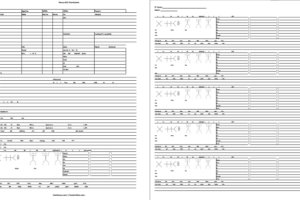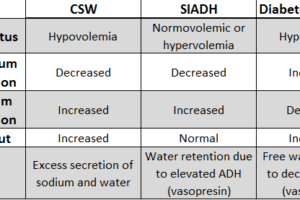Compression of the neurovascular structures at the opening into the upper thorax is called thoracic outlet syndrome (TOS). There are 3 narrow passageways within the route of the nerves from the brachial plexus and the branches of the subclavian vein and artery out into the arm. The narrowness of these 3 areas creates the possibility of irritation and compression of the structures.
The most proximal of the passageways is the interscalene triangle, bordered by the anterior scalene muscle anteriorly, the middle scalene muscle posteriorly, and the medial surface of the first rib inferiorly. This area may shrink with certain activities. Fibrous bands, cervical ribs, and anomalous muscles may effectively decrease its diameter.
The second passageway is the costoclavicular triangle, bordered anteriorly by the middle third of the clavicle, posteromedially by the first rib, and posterolaterally by the upper border of the scapula. The last passageway is the subcoracoid space beneath the coracoid process just deep to the pectoralis minor tendon.
Patients with TOS will present the vast majority of cases with neurologic symptoms, with C8 and T1, the bottom of the brachial plexus, being the most commonly involved nerve roots. This yields pain and paresthesias in the ulnar nerve distribution. C5, C6, and C7 are the second most commonly involved nerve roots, producing symptoms referred to the neck, ear, upper chest, upper back, and outer arm in the radial nerve distribution.
Paresthesias may awaken TOS patients from sleep. They may also note a loss of dexterity, have cold intolerance and headaches. Arterial compromise may cause claudication and in young athletes interfere with the vigorous activities of pitching, etc.
Physical examination is often normal or difficult because of guarding. Sometimes, a radial pulse will decrease with a provocative maneuver. There has been a reliance on a test called the elevated arm stress test (EAST) but this has been shown to be of very debatable value.
Another test, the Adson’s test, has also been used extensively. In this test, the patient breathes in deeply, the neck is extended, and the chin is turned to the affected side and then towards the unaffected side. Positive findings are a decrease in radial pulse—indicative of scalene compression. There are significant numbers of both false positives and false negatives.
There are two other clinical tests, the Wright test, and the Roos stress test, but these also add to a total picture and are not by any means definitive.
Plain films are of help in evaluating the possibility of cervical ribs or other abnormalities. MRIs are helpful in looking at the brachial plexus and arterial structures for any anatomic narrowing, but since TOS may be a dynamic problem, even this means of visualization has its limitations. Perhaps the most sensitive neurological tool are an EMG and nerve conduction study.
At one time, surgery was quite common for TOS. Basically, if there was a cervical rib it was removed. However, the incidence of pneumothorax and the low rate of success cast dispersions on the surgery, and it is now used much less commonly than before. There are now some very well defined guidelines for the surgery. Otherwise, conservative treatment is recommended in the form of physical therapy and behavior modification.



